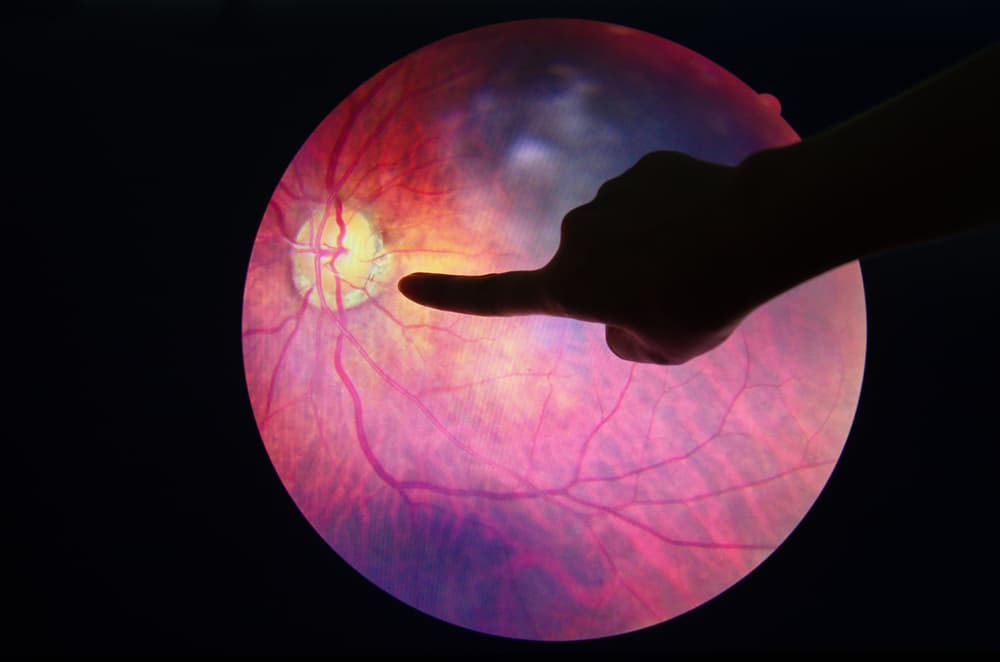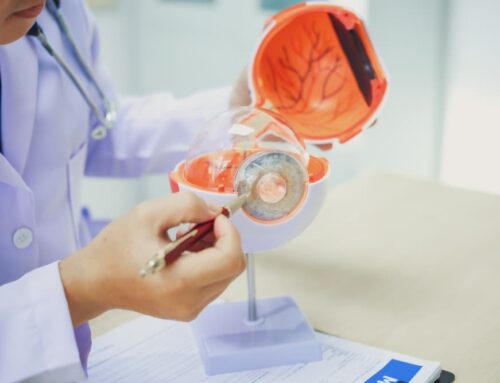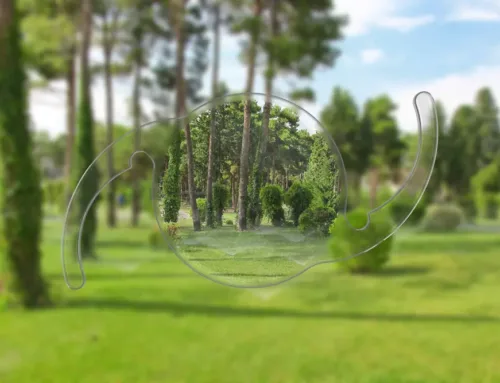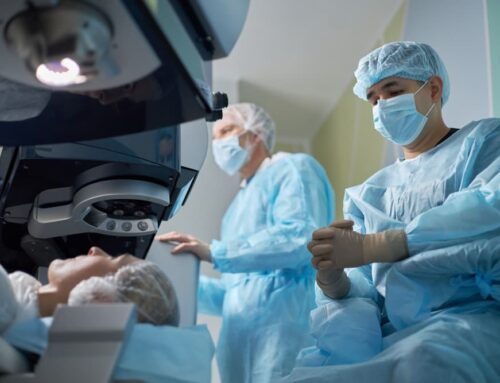People with diabetes are susceptible to an eye disease called diabetic retinopathy. Diabetic retinopathy symptoms usually affect both eyes. Retinopathy occurs when high blood sugar levels cause damage to blood vessels in the retina, causing them to swell and leak. In some people, they can close and actually stop blood from passing through. Sometimes abnormal new blood vessels grow on the retina. All of these changes have a significant effect on a person’s vision.
If you know you have diabetes or suspect you do, this is certainly something to pay attention to. You should learn not only the retinopathy symptoms, but also when to see an eye doctor for treatment.
Table of Contents
- Learn The Causes of Retinopathy
- Retinopathy Symptoms
- Retinopathy Treatment
- Fluorescein Angiography
Learn The Causes of Retinopathy

Changes in blood sugar levels can affect your eyes, and therefore your vision. The condition can develop in anyone who has type 1 or type 2 diabetes. Mayo Clinic tells us that the longer you have diabetes and the less controlled your blood sugar is, the more likely you are to develop this eye complication. Careful management of your diabetes is the best way to prevent and reduce any possible vision loss.
Diabetes wreaks havoc on a person’s entire body. Over time, too much sugar in a person’s blood can lead to the blockage of the tiny blood vessels that nourish the retina. This cuts off its blood supply and their eye attempts to grow new blood vessels. Unfortunately, these new blood vessels don’t develop properly and can leak easily. This is retinopathy.
Retinopathy Symptoms
It is possible to have diabetic retinopathy and not yet know it because it often has no symptoms in its early stages. It won’t stay this way for long, though. As the condition gets worse, you will notice more and more symptoms that include:
- Seeing an increasing number of floaters
- Having blurry vision
- Experience vision changes that go from blurry to clear
- Seeing blank or dark areas in your field of vision
- Having poor night vision
- Noticing colors appear faded or washed out
- Losing your vision
Retinopathy Treatment

If you are experiencing any of the symptoms listed above, you need to make an appointment to be seen by a Reno ophthalmologist. The friendly, professional team at Eye Care of Reno have a fantastic way to diagnose and then treat retinopathy.
Fluorescein Angiography
Fluorescein Angiography is a test done to check the health of the inside lining of your eye, the retina. It also checks the tiny blood vessels, known as capillaries, that carry blood to the retina. This test uses a special dye to create detailed images of the retina. These images help your doctor decide whether special treatments are needed. During the test, the following steps are done:
#1 Photographs are taken of the retina.
#2 A safe dye is then injected into the bloodstream through the arm or hand. The dye travels to the capillaries in the eye.
#3 Once the dye is in place, more photographs are taken of the retina. The dye causes the capillaries to stand out on the photographs.
Your treatment is based on what your ophthalmologist sees in your eyes. At first, your Reno eye doctor may simply want to monitor your vision. From time to time, you may also have an angiogram done again in order to track the progress of your condition.
Treatment options may include medicine to control your blood sugar. Having a better control of your blood sugar and blood pressure can stop vision loss. There is also medication that helps to reduce swelling of the macula, slowing vision loss and even improving vision in some patients. In extreme cases your eye doctor may recommend surgery. Laser surgery can be used to help seal off leaking blood vessels.
If you suspect you’re suffering with diabetic retinopathy, please make an appointment right away with us here at Eye Care Professionals of Reno.











